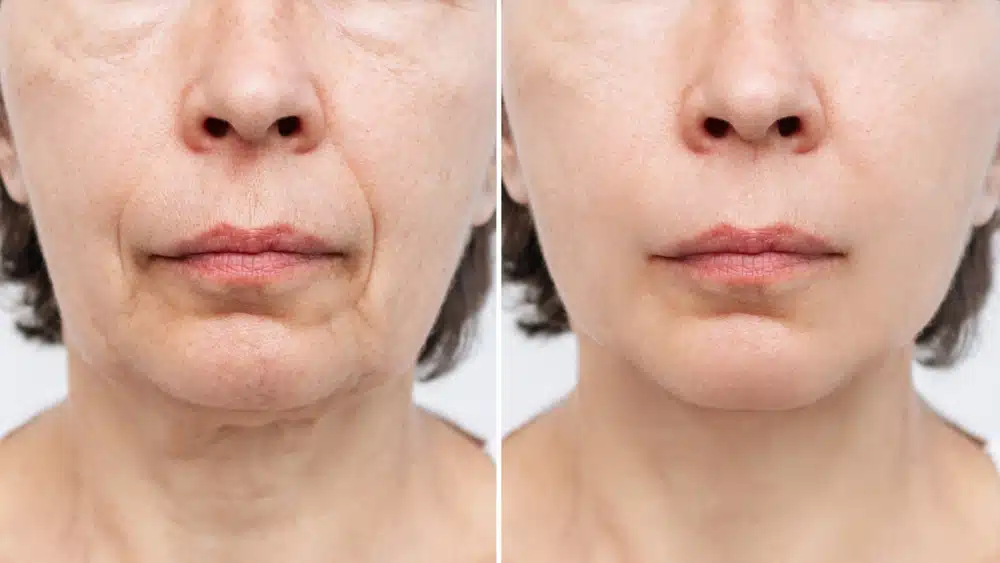Our skin changes with age; it loses suppleness and firmness. Deep lines and loss of volume in the face tissues are among the obvious indicators of aging that this natural process causes—wrinkles, sagging, etc.
Further aggravating these age-related changes are environmental elements and a drop in collagen generation—the building blocks of our skin. Many people starting their 40s find these advanced indicators of aging more noticeable, which causes them self-consciousness about their face.

Thanks to developments in cosmetic surgery, though, several facelift techniques are now accessible to counteract these changes and bring back a more youthful look. Whether it’s drooping skin around the jowls or deep wrinkles and loss of volume in the mid-face, each traditional facelift as well as a micro facelift is meant to target particular regions of concern.
This page seeks to equip you with the most important questions to ask before having a facelift in your 40s so that you may make a confident and informed choice.
Why a Facelift in Your 40s May Be Ideal
Though there is no ideal age for a facelift, for several reasons the 40s can be the perfect moment. First of all, the skin still has flexibility, which would improve the surgical outcomes. Moreover, having a facelift in your 40s can help to slow down the obvious aging process, preventing the need for additional major surgery down the road. People in their 40s also usually have strong health, which helps to lower the risk of problems and hastens recovery.
SPECIALIST CARE YOU CAN TRUST
You can trust the entire staff to help make your visit as comfortable and safe as possible!
Essential Preliminary Facelift Considerations
Before deciding on a facelift, there are several important considerations to keep in mind.
Research
One must understand the operation, its advantages, and its hazards. Finding out about the several kinds of facelifts on the market and which one would be best for your particular situation helps also.
Budget
Usually missing from insurance coverage, facelifts can be expensive. One should consider the expenses of the facelift operation together with any other charges like prospective revision operations or follow-up treatment.
Health Assessment
To guarantee your suitability for a facelift, a comprehensive health check is required. This covers a review of your medical background, present condition of health, and lifestyle choices including alcohol or smoking.
Timing
Following a facelift can result in a long recuperation period whereby you will have to take time off from other obligations including employment. You should think about the surgery’s timing and make sure it matches your calendar.
Questions to Ask During Your Facelift Consultation

Ask questions during your facelift consultation to help you completely grasp the operation and expected results.
Some important questions to ask include:
- What type of facelift is recommended for me?
- What are the potential risks and complications?
- What is the expected recovery time?
- What results can I realistically expect?
Evaluating a Facelift Surgeon’s Expertise
One of the most crucial choices you make about a facelift is selecting the correct surgeon.
Credentials and Experience
Verify the surgeon’s vast facelifting experience and plastic surgery board certification.
Before-and-After Portfolio
Request to see before-and-after photos of previous facelift patients. This can give you a better idea of the surgeon’s skills and the results you can expect.
Before and After Photos


* Each patient is unique and individual results may vary.
Inquiring About the Facelift Procedure Types
Considering this kind of surgery requires knowledge of the several forms of facelift techniques. There are several facelift methods; your surgeon will advise the one best fit for your objectives and situation.
Traditional Facelift
Deep wrinkles, volume loss, and drooping skin are among the advanced aging symptoms a classic facelift treats. To reach deeper face tissues, the operation consists of incisions around the hairline and ears. Excess skin is eliminated and underlying tissues are tightened, improving skin laxity and lowering wrinkles for a young contour.
Mini Facelift
Less invasive than a classic facelift, a small facelift or mini lift targets early aging indicators including minor sagging in cheeks and jowls, nasolabial folds, and marionette lines. Little cuts around the ears let the surgeon tighten tissues and eliminate extra skin.
Mid-Facelift
Targeting mid-face aging symptoms including volume loss, deep wrinkles, and drooping tissues, a mid-facelift or cheek lift addresses By elevating and reorienting deeper tissues and fat deposits, it increases cheek volume and lessens nasolabial folds or smile lines. It can help clear dark circles and under-eye bags and revitalize lower eyelids. Usually carried out using an endoscopic approach, the mid-facelift has fewer incisions and maybe quicker recovery time than a conventional facelift.
Non-Surgical Facelift
Non-surgical facelifts enhance facial look using non-invasive procedures such as laser treatments, Botox, or dermal fillers. While these treatments can correct mild aging symptoms, they do not yield the same long-lasting effects as surgical facelifts.
Questions About Facelift Costs
The type of operation, the surgeon’s skill, and the location will all greatly affect the cost of a facelift. Ask your surgeon for a thorough analysis of all the charges connected to the operation, including the surgeon’s fee, anesthetic, facility fees, and any other costs, at your appointment.

Post-Facelift Recovery Queries
You should expect some swelling, bruising, and pain following a facelift. Your surgeon will provide careful post-operative care recommendations to help reduce these symptoms and promote recovery. It is quite important to ask about the expected recovery plan, including when you could resume normal activities and return to work.
Realistic Expectations and Final Outcomes of a Facelift
Even if a facelift will improve your look tremendously, you should have modest expectations. A facelift will help you look younger and fresher even if it won’t change your appearance. Your surgeon should explicitly explain what results you should expect during your appointment and show you before-and-after images of former patients.
Your Facelift, Your Questions
Recall that this is your process; so, ask as many questions as you need to be at ease and confident in your choice. Ask your surgeon anything you are unsure about, including questions regarding the operation itself, the recovery, the expenses, or the anticipated outcomes.
Set Up a Consultation for a Facelift in Omaha, NE
Aesthetic Surgical Images offers comprehensive consultations for individuals considering abdominoplasty. Our team of experienced, board-certified physicians is dedicated to patient care and satisfaction. Schedule your initial consultation today to discuss your options and prepare for a smooth surgery.
Frequently Asked Questions: Pre-Facelift Queries
When choosing a facelift surgeon, look for a board-certified plastic surgeon with extensive experience in facelift surgery. Review their before-and-after photos and patient testimonials to get a sense of their work.
The longevity of facelift results can vary, but typically, a facelift can last 10 to 15 years. Genetics, lifestyle, and skincare regimen can influence the longevity of the results.
Yes, there are non-surgical alternatives to a traditional facelift, including dermal fillers, Botox, and laser treatments. However, these results are temporary and will not provide the same degree of improvement as a surgical facelift.
Yes, a facelift can often be combined with other procedures, such as a neck lift, eyelid surgery, or brow lift, to enhance the overall result.
To prepare for a facelift consultation, research the procedure and write down any questions you have. It may also be helpful to bring photos that show the result you’re hoping to achieve.
